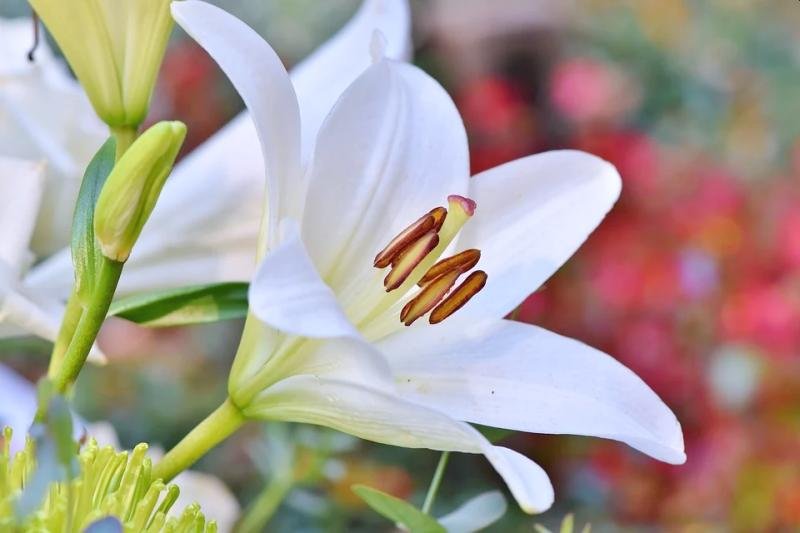
lily flower
introduction to lily flower
Lily flowers, with their elegant shape and vibrant colors, are among the most cherished blooms in gardens and floral arrangements worldwide. Known for their beauty and fragrance, lilies symbolize purity, renewal, and devotion, making them a popular choice for various occasions, from weddings to memorials. In this article, we’ll explore the fascinating world of lilies, including their varieties, care tips, and cultural significance.
A Look at Lily Varieties
Lilies belong to the genus Lilium, which includes around 100 species and many hybrids. Here are some popular types: lily flower
- Asiatic Lilies: These are the first to bloom in the spring and come in a variety of colors, including yellow, orange, and pink. They are known for their bold colors and do not have a strong fragrance.
- Oriental Lilies: With their large, fragrant blooms, Oriental lilies are often seen in floral arrangements. They typically bloom later in the summer and have a sweet, heady scent. lily flower
- Trumpet Lilies: Named for their trumpet-shaped flowers, these lilies are often tall and have a lovely fragrance. They can be found in various colors, including white, yellow, and orange.
- Tiger Lilies: Recognizable by their orange petals with dark spots, tiger lilies are hardy and lily flower can thrive in various conditions. They are known for their unique appearance and resilience.
- Calla Lilies: Although not true lilies, calla lilies are beloved for their striking, trumpet-like shape. They are often used in elegant arrangements and come in many colors, including white, pink, and purple. lily flower
Care Tips for Growing Lilies
If you’re interested in growing lilies in your garden, here are some helpful tips to ensure they thrive: lily flower
- Choose the Right Location: Lilies prefer well-drained soil and a spot that gets full sun to partial shade. Ensure they have enough space to grow, as they can spread over time. lily flower
- Planting: Plant lily bulbs in the fall or spring, about 6-8 inches deep. Space them at least a foot apart to allow for growth.
- Watering: Lilies enjoy consistent moisture, especially during their growing season. Water them regularly but avoid waterlogging the soil, as this can lead to bulb rot.
- Fertilizing: Use a balanced fertilizer in the spring when new growth appears. This will help promote healthy blooms.
- Pest Control: Keep an eye out for pests like aphids and lily beetles. Handpicking or using insecticidal soap can help manage these issues.
- Deadheading: After blooming, remove spent flowers to encourage further growth and prevent the plant from using energy on seed production.
Cultural Significance of Lilies
Lilies have a rich history in various cultures. In Christianity, they symbolize the Virgin Mary and are often associated with purity and virtue. In Asian cultures, lilies are seen as symbols of abundance and prosperity. In ancient Greece, the lily was associated with Hera, the goddess of marriage and childbirth.
Additionally, the lily has inspired countless works of art, poetry, and literature, celebrated for its beauty and delicate nature.
Conclusion
Whether in your garden or as part of a beautiful bouquet, lilies bring joy and elegance to any setting. Their variety, ease of care, and rich symbolism make them a beloved choice for flower enthusiasts and casual gardeners alike. So, the next time you see these stunning blooms, take a moment to appreciate their beauty and the joy they bring to our lives.






